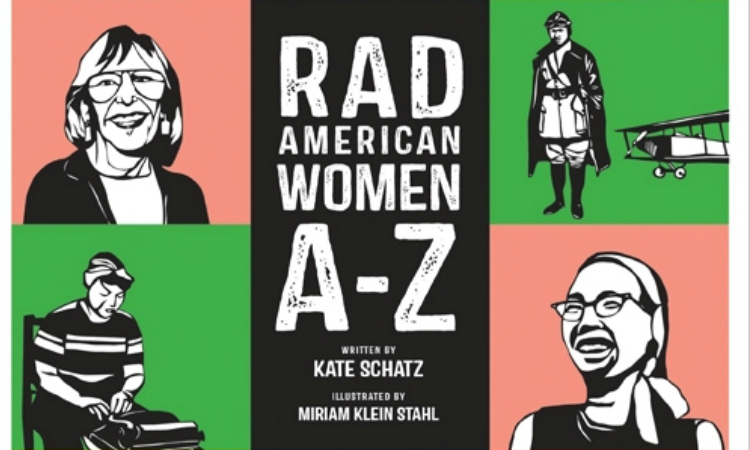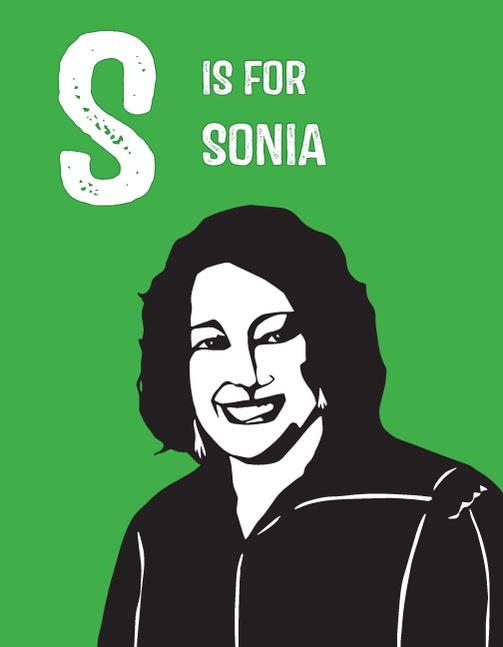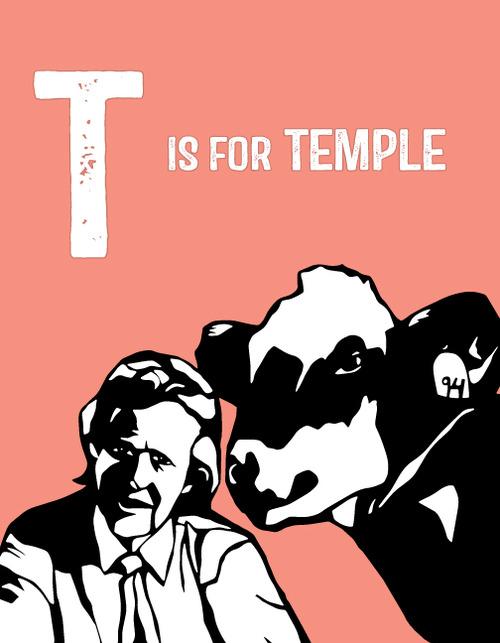When 36-year-old fiction writer and mother of two Kate Schatz (pictured right with illustrator Miriam Klein Stahl) set out to bring a little feminist reading to her then-2-year-old daughter, she thought it would be as easy as grabbing a book off the shelf.
It wasn't. Among picture books about animals, food, New York City, American presidents, there was nothing about women.
"I had been thinking a lot about what it means to be a feminist parent," she said, "and what it means to raise a daughter. I felt certain there were a ton of things out there like this book, but when I saw that there wasn't, I realized I should create it myself."
Which is what the women's studies major eventually did.
The result is a book, "Rad American Women A-Z: Rebels, Trailblazers and Visionaries Who Shaped Our History … and Our Future!"—interesting for all but written for kids about radical women in American history. Schatz picked one woman for every letter of the alphabet. (Well, almost every letter. Oh, that vexing "X"!) Mom.me interviewed Schatz about the project, how she picked one among many and what she learned about radical women in the U.S. along the way.
How did you decide who got each coveted letter?
It was fun and agonizing and fascinating all at the same time. I began with my own personal brainstorm. Some names popped into my head for certain letters right away. "Z" I knew would be Zora Neale Hurston, a writer that I love.
I also sent out an email to a ton of friends and asked them who they would include. I crowdsourced ideas from as many people as possible. Then, I began narrowing it down, working toward diversity in terms of race and the fields they were working in. I wanted to be sure to include artists, activists, scientists and doctors. And I wanted the women to span several centuries.
It was also important to me to focus on women who weren’t as well known. Some, of course, are familiar to most readers, but I wanted to use this as an opportunity for people whose lives are relatively unknown but totally fascinating. I felt like there are the heavy-hitters—with all due respect to Susan B. Anthony, Rosa Parks and Gloria Steinem—we know a lot about. But I wanted to show many other women who were amazing contributors to history who may not be so well known.

How do you feel about those you had to leave out?
I mean, it was so hard. For every letter, there were so many more people I could have included. A few times I had someone in mind for a letter, but then I would stumble upon someone I wasn’t familiar with, whom I'd research and decide to go with.
Really, there should be hundreds of thousands in the book. I'm doing this full-well knowing that it's just a very small sample.
Though this project has this kind of expansive thing—maybe a radical woman didn't show up in this particular book, but she might be in a sequel. Or maybe some other work that inspires people.
It's surprising how really original this is. We're very used to leaving women out of history, aren't we?
We’re left out of contemporary fields, not just history—science, politics. I believe very strongly in encouraging young girls and giving them role models, making sure they see and know about these women. The point I'm making with this book is to inspire my daughter and also my son. Of course, young girls should grow up with these strong female role models. And it's just as important for boys to grow up and know women can do what men and boys can.

Talk about the letter "X."
Any parent familiar with the plethora of ABC books, we all know the letter "X" winds up being something random. We just don’t have a lot of words that start with it in English. For the book, I didn’t want to feel like I was forcing someone in there. A friend of mine said "X" could be for all the women whose names we don’t know. I had been thinking about how many names we don’t know and that resonated with me. I wanted there to be a space in the book where we could acknowledge women who impacted history but whose work and names are not known. "X" also represents an entry point for the future: It represents women who haven't done their great thing yet. It’s a placeholder for people before us and all those to come as well.
When researching, did you already know all these women? I’ll admit there were a couple I hadn’t heard of.
Most of them were on my radar, some whom I felt very familiar with. But in doing the research, I found out so much more. I became really fascinated with quite a few women while doing the research.
Yuri Kochiyama is a good example. She passed away just last year and that's when I started reading more about her. As I was doing my research, I would read about someone else, Google that person and then go down that path in history. In the case of Hazel Scott, she should be way more famous. But she was among many American artists blacklisted, so she became an expat and is not a well-known person.
We often tend to accept history as an objective set of established facts, and we think we know all about a certain era. It's important for adults, including people who are informed about women’s history, to learn about these women, to know about them.

What’s the most surprising inclusion, do you think?
I think one of the ones that ended up surprising me was Carol Burnett. She’s not thought of as someone particularly radical from history. Reading about her life story, though, she was a true groundbreaker.
I've heard some people say they are surprised by Virginia Apgar. In the book, she’s this older semi-obscure physician. Many people don’t realize she was groundbreaker in the medical field.
RELATED: The Working Mom Struggle in Pictures
What was the toughest decision you had to make?
I think it was a bold decision to go with Angela Davis for the first letter. She's a polarizing figure, a political radical. We had number of options to go with "A"—Adrienne Rich, Audre Lorde. Going with Angela Davis set the tone right away. It’s not a shy choice. She represents a particular moment in history, and there’s so much more to her than her work with the Black Panthers and Soledad Brothers trials. She's a philosopher and in education. In writing about Angela Davis, I very intentionally focused her work as a writer, scholar and educator.
Tell us about your illustrator.
Miriam Klein Stahl is an acquaintance of mine. She also lives in the Bay Area. I made a New Year's resolution in 2014 that I would finish this book, so I emailed her and asked if she was interested. We clicked right away. She's a great collaborator. When she came on board, I had most of the women. But she helped me decide on the rest.
"Rad American Women A-Z: Rebels, Trailblazers and Visionaries Who Shaped Our History … and Our Future!" is available for pre-order now and comes out in hardback April 14.
Images via Rad American Women




